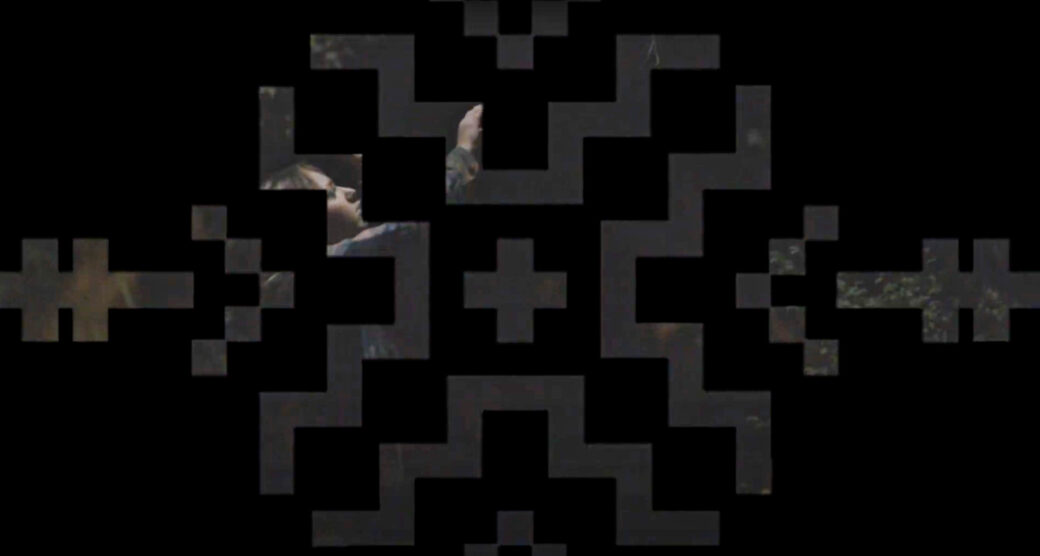
Kite's Wóaič’ibleze (Self-Reflection) (2023)


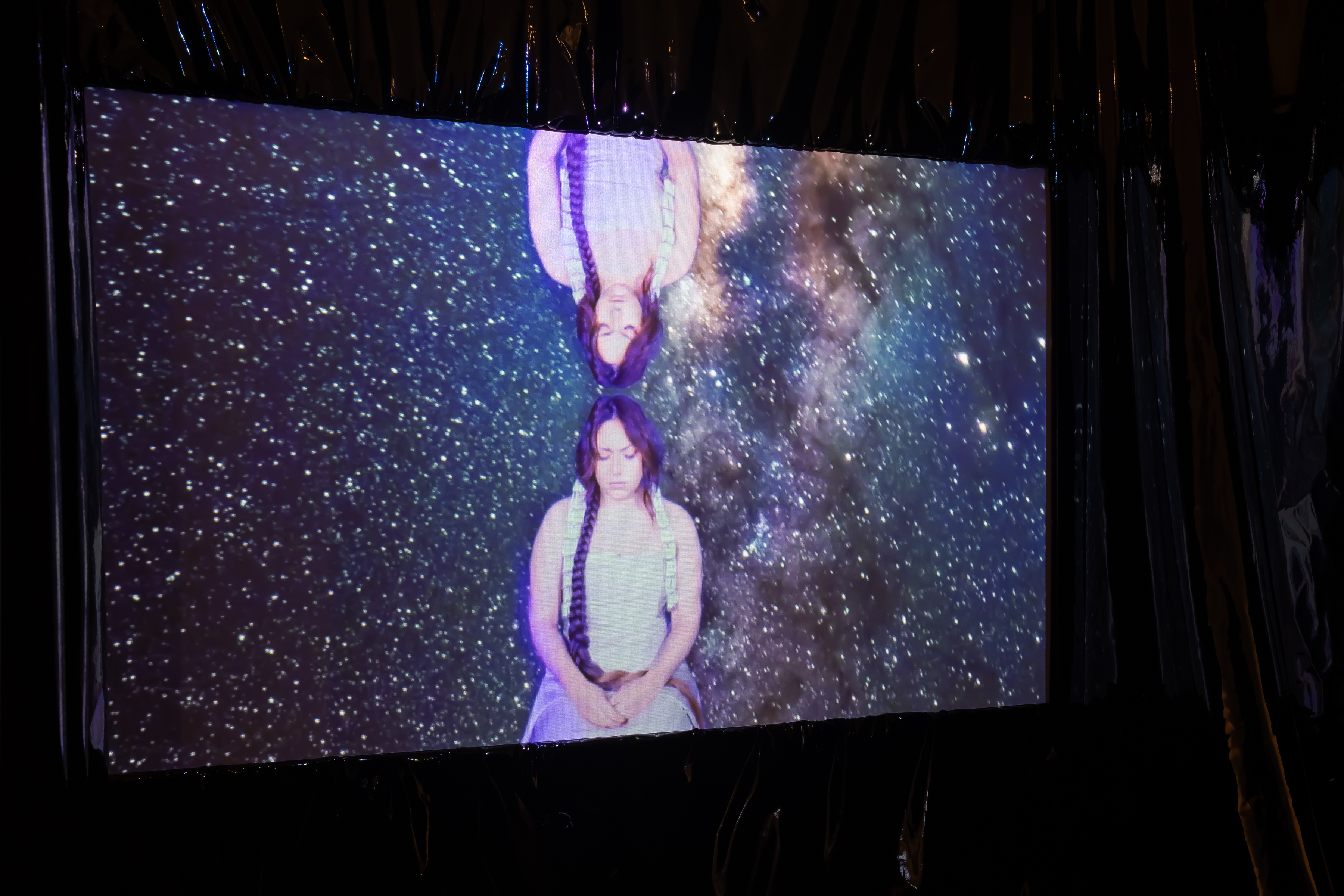
Kite's Wóaič’ibleze (Self-Reflection) (2023)
ArtNow: The Soul Is a Wanderer explores concepts and histories of reckoning and renewal, imagining alternate futures and ways to get there. Indigenous artist Kite’s on-view work explores these ideas through traditional Lakȟóta artmaking practices and dream narratives, but it is within her upcoming performance, Tȟaŋmáhel, that visitors have the opportunity to experience these ideologies and visual narratives for themselves.
Dr. Suzanna Kite is an Oglála Lakȟóta performance artist, visual artist and composer, and is currently the distinguished artist in residence and assistant professor of American and Indigenous Studies at Bard College, as well as a research associate and residency coordinator for the Abundant Intelligences (Indigenous AI) project. However, Kite has been in touch with her artistic prowess, particularly her deep roots in music, since a young age.
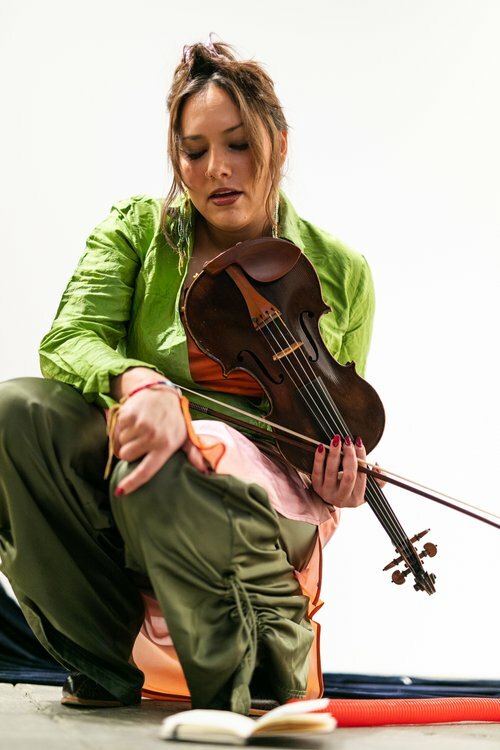
Kite performing Oíhaŋke Waníča (Infinity) (2023)
“I started off artistically as a violinist as a child, and I played classical violin,” Kite explains. “My aunt is a Klezmer violinist, Alicia Svigals, and so I studied violin extensively. And then realized I didn’t want to just play the music of dead white men; I wanted to make my own music and started to become a composer. But in grad school, I realized my strengths are not those of a composer, and I wanted to do more than just make music; I wanted to dabble in everything, including dabbling in research. Through artistic research, I’m allowed to do whatever I want, explore any topic: geology, philosophy, poetry, science — I can explore anything.”
Through this development of her artistic lens, Kite found a connection within herself, between her body and mind, that plays a major role in her creative exploration. As Oglála Lakȟóta, the artist experienced this not only from her own perspective, but the lived lives and ongoing experiences of those around her.
“I see my work in video and sound and sculpture and everything I do as very connected to the body,” Kite says. “I think that embodied knowledge-making is a core part of Lakȟóta practices of making new knowledge and creating. I see that in the ways that my family makes beadwork, I see it in the ways they dance, I see it in the ways my relatives make new songs and sing songs and of course, story tell. It’s such a creative way of living that I tie in everything that I make to that way of making new things.”
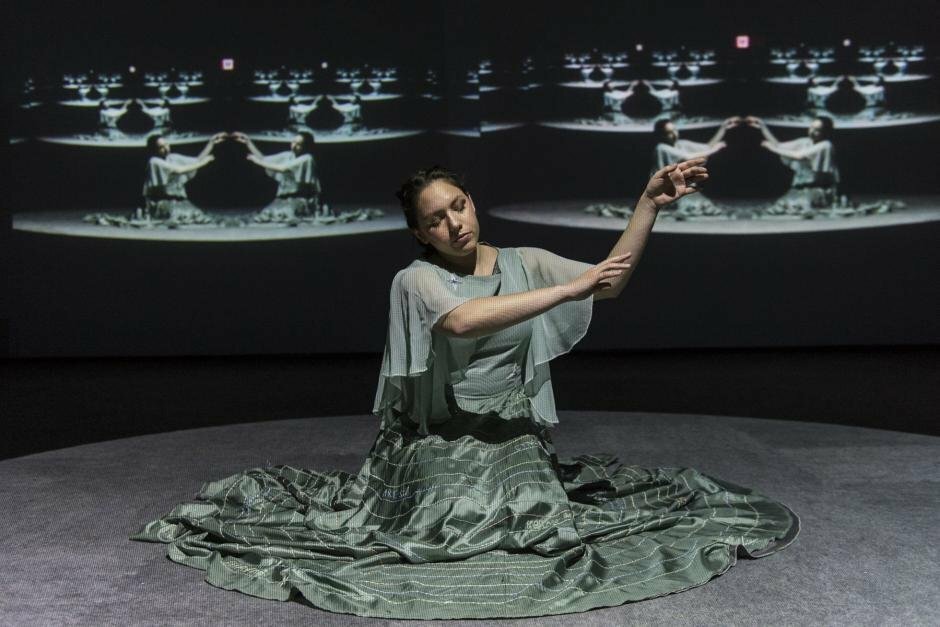
Kite performing Everything I Say is True (2017)
As her practice evolved, the Indigenous artist concluded that in actuality she is a collage artist, as she finds joy and inspiration in collecting bits of poetry, excerpts from writers and ideas that pop into her, combining these clips of information and moments with theoretical frameworks and visual ideas, ultimately compiling them into performances. Tȟaŋmáhel became the product of these collaged movements.
“In this piece, it started as an idea I had for a long time about invasive thoughts, wanting to make video reenactments of my invasive thoughts,” Kite explains. “Right now, I happily don’t have very many invasive thoughts, but when I’m really stressed out or depressed or anxious, they kind of come into my brain, like hearing a song on repeat in your head where it’s just bugging you. The core one that I wanted to reenact in the piece was an invasive song, that song [“Do You Love Me (Now That I Can Dance)” by The Contours] would constantly repeat in my head, like it was torturing me. And it was very literal. The person I was dating at the time wouldn’t tell me they loved me, they weren’t ready to do that yet, and that was somehow indicative of every problem in my life ever, and I just tortured myself thinking about it and obsessing over it. I got to go with some friends, Olivia Campbell and Woodrow Hunt, and they helped me shoot these. That became the core of the lecture.”
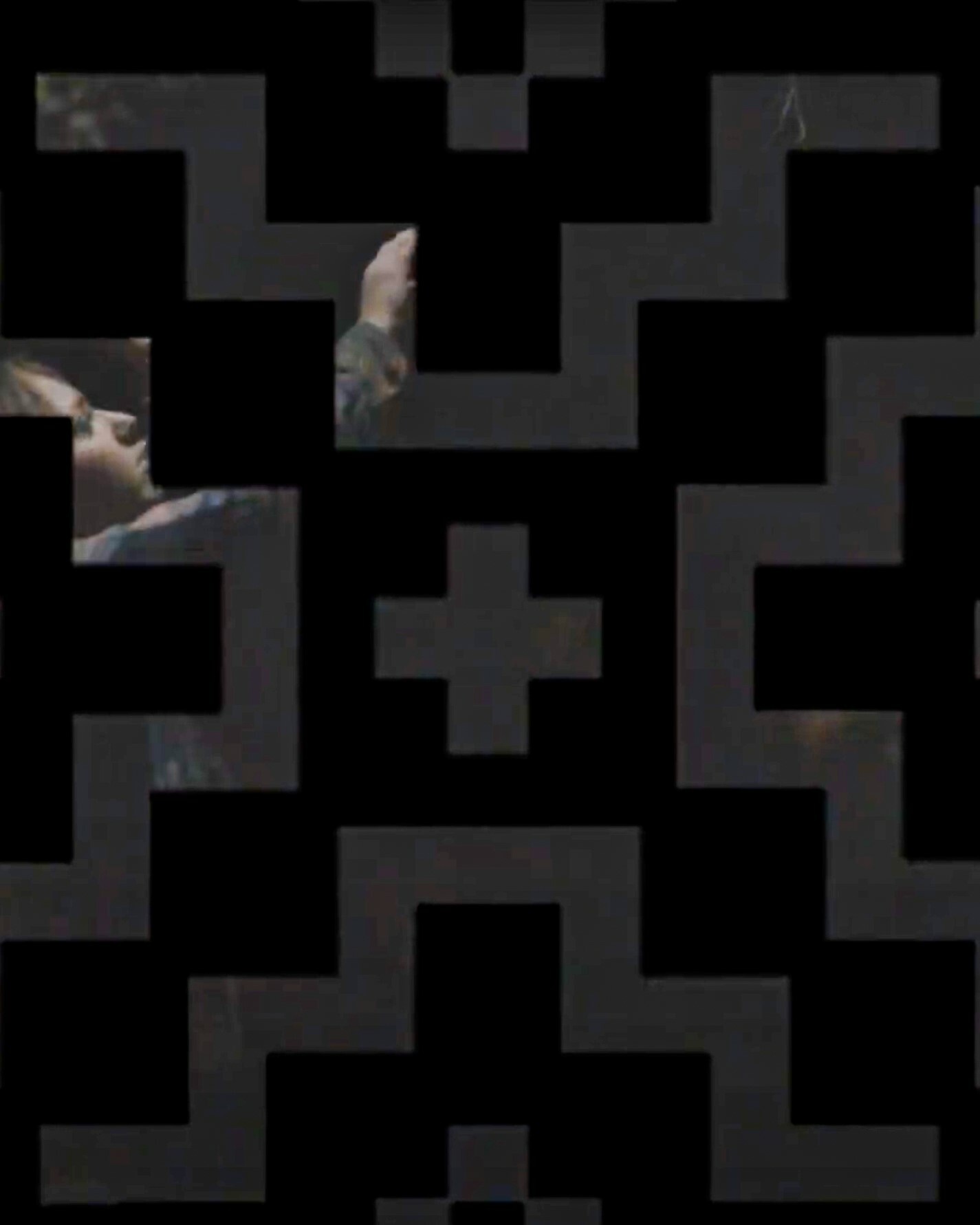
Tȟaŋmáhel (detail) (2022)
In Tȟaŋmáhel, originally performed in 2022 via an online forum at Singapore Art Museum, viewers watch through shifting shapes derived from Lakȟóta patterns. Between cutouts, images of Kite’s feet anxiously rubbing together, of a chained hand dangling, of fingers scratching and pulling at the back of a shoulder can be seen. The audio is a combination of found sounds, like clanging bells, and Kite’s voice as she reads select excerpts, intrusive thoughts, ideas, theories and poems, cultivating a visual and audible performance. Within these fragmented shots are views of the Lakȟóta design Kite created, later revealed in its entirety.
“Each part of these videos makes up a whole snapshot of my mind at this specific time that I wrote the piece,” Kite says.
The term Tȟaŋmáhel translates as an adverb, meaning on to be on the inside, within one’s heart and body, inside one’s mind. Kite utilizes this meaning to truly take audience members into the interior of her mind, her feelings, her experiences and her artmaking, and in turn, invites viewers to do the same.
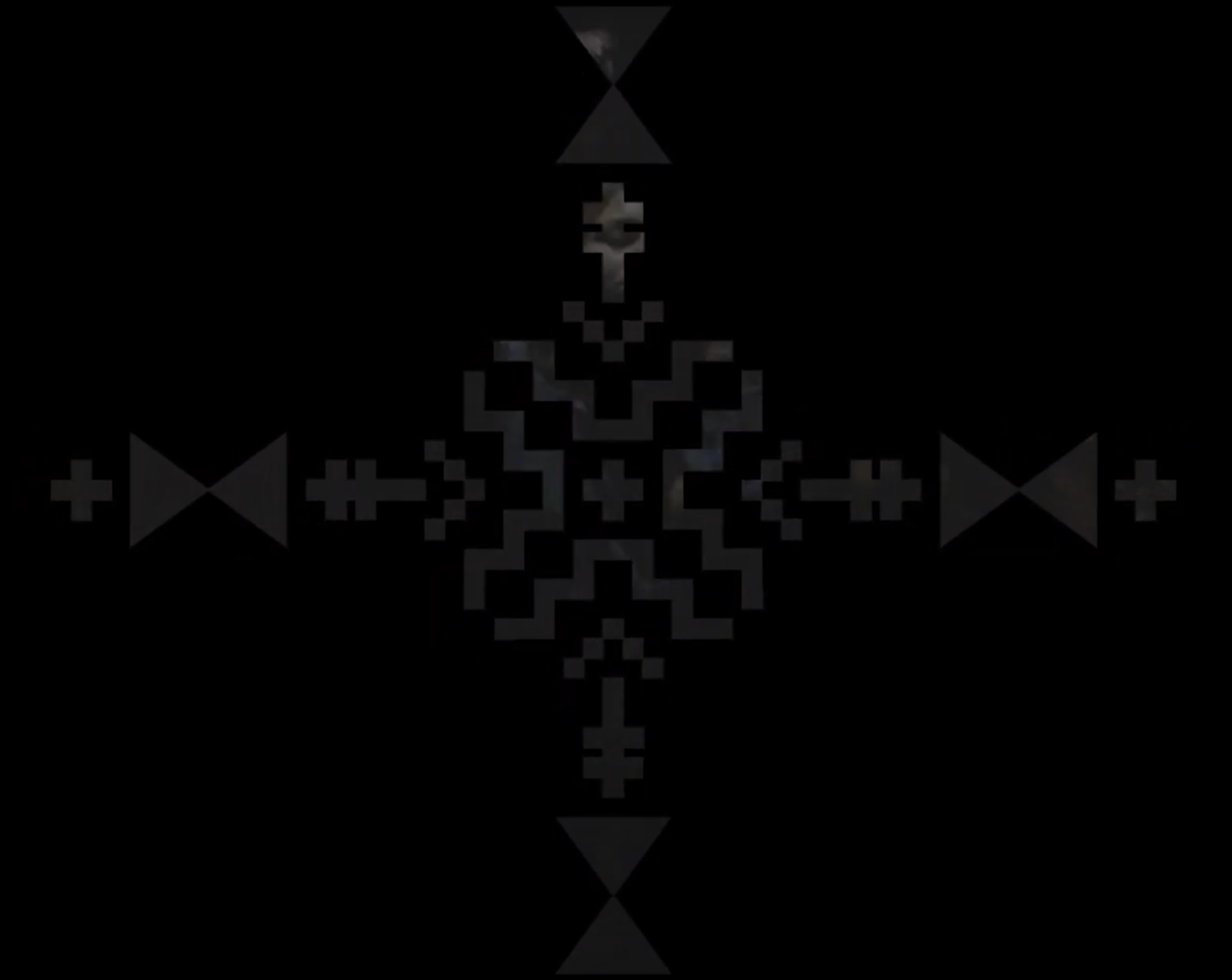
“It’s mostly cathartic for me, and I hope that they see that I’m being very open and very vulnerable” Kite says. “I’m sharing these super vulnerable things and then I do what I do best, which is over intellectualize them. I try to understand these ideas that pop into my head like I’m honoring these reoccurring thoughts, I’m honoring my worries as deep enough and important enough to be ruminated over for 40 minutes. And I think that’s an invitation for other people, to realize their anxieties are just as important to share and ruminate over and consider as part of a complex whole.”
Join us Thursday, Sept. 28, at 7 p.m. for this fascinating weaving of dream narratives and contemporary art. Experience this exploration of consciousness, what it is to be alive, what it is to feel and what it is to be. All are welcome to this free program.
Images:
Kite, Tȟaŋmáhel, 2022. Video accompanying performance. Image courtesy of the artist.
Installation view of Kite's Wóaič’ibleze (Self-Reflection) (2023) in ArtNow: The Soul Is a Wanderer. Photo: Ann Sherman.
Kite performing Oíhaŋke Waníča (Infinity) (2023). Photo: Emmanuel Abreu.
Kite performing Everything I Say is True (2017). Image courtesy of the artist.
Kite, Tȟaŋmáhel (detail), 2022. Video accompanying performance. Image courtesy of the artist.
Kite, Tȟaŋmáhel, 2022. Video accompanying performance. Image courtesy of the artist.
Return to New Light.
Monday 11 a.m. - 6 p.m.
Closed Tuesday
Wednesday 11 a.m. - 6 p.m.
Thursday 11 a.m. - 9 p.m.
Friday - Sunday
11 a.m. - 6 p.m.
see additional holidays
Visit us at
11 NW 11th St.
Oklahoma City, OK 73103
Phone: 405 951 0000
Fax: 405 951 0003
info@okcontemp.org
SEND MAIL TO
Oklahoma Contemporary
P.O. Box 3062
Oklahoma City, OK 73101
STAY UP TO DATE
Join our mailing list to learn about our events, exhibitions, education and more.
©2024 Oklahoma Contemporary All Rights Reserved.